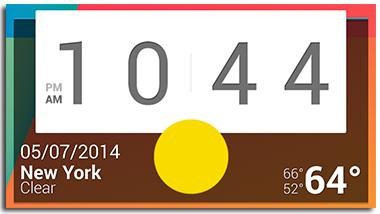This morning, Microsoft released Windows 8.1. Windows 8 users can upgrade for free by visiting the Windows Store; if you have another operating system, the upgrade will cost you the same price as Windows 8 itself: $120 for the normal version, or $200 for Windows 8.1 Pro. Windows 8.1 is a fairly major update for both tablet and laptop/desktop users, providing a better experience both within the Metro interface on touchscreens and with the mouse and keyboard on the Desktop. Using the mouse and keyboard within the Metro interface, however, still sucks — and the Start button and menu, though technically reinstated, are not back in spirit.
Downloading and installing Windows 8.1
To install Windows 8 follow our guide for Windows 8 operating systems. For the most part, installing Windows 8.1 is quick, painless, and risk-free, so you don’t need to worry about backing up or other preparatory measures. Do make sure you have plenty of free hard drive space, though (20GB+), and if you’re coming from Windows 8.1 Preview, be sure to read the caveats in our guide.
As the name implies, Windows 8.1 is more of a revision to Windows 8 than a major update. The new Metro interface is still front and center, and still awful to use with a mouse and keyboard — but, as a concession to those without touchscreens, you can now configure Windows 8.1 to boot straight to the Desktop. The Start button also makes its illustrious return, but all it does is bring up the Metro interface. The Start button can be configured to bring up a rejigged All Apps view, which is kind of like a full-screen Start menu, but it’s still a piggish to navigate with a mouse. If you make extensive use of the real Start menu in Windows XP/Vista/7, you will want to install a third-party Start menu replacement (which still work perfectly with Windows 8.1).
On the Metro side of things, there are extensive updates to configurability and usability. The Metro Control Panel (“PC Settings”) can now be used to change most important settings. You can now split-screen multiple apps, and you’re not restricted to the size and location of the splits — apps can be any width, including 50/50. Multi-monitor support for Metro has improved, too, allowing you to have multiple apps split-screened on multiple monitors.
The Start screen is more configurable, the Lock screen is more functional (it now makes a great digital photo frame), and lots of stock apps have received much-needed updates. The Windows Store has been tweaked, but it’s still pretty rough.
Bridging the Metro and Desktop divide, Windows 8.1 brings built-in SkyDrive integration (to Metro and Libraries in Explorer), and Search has been significantly bolstered, especially when it comes to web-based search results. There’s also a new option to show your Desktop wallpaper behind the Metro Start screen, which makes a surprisingly big difference when it comes to the jarring juxtaposition between the two interfaces.
Why did we have to wait two years for this?
In short, Windows 8.1 takes Windows 8 — which really was an abomination for mouse-and-keyboard Desktop users, and only slightly better on tablets — and makes it usable. The irony, though, is that almost all of the changes made to Windows 8.1 were originally pointed out two years ago by beta testers of the original Windows 8 Preview.
When you consider that Windows 8 and 8.1 have been in development for a grand total of five years, and Microsoft has been making operating systems for more than 20 years, and Windows 7 was one of the best OSes ever released, it’s really hard to imagine how Microsoft got the original release of Windows 8 so, so wrong. (Personally, I think Microsoft only implemented the Metro interface very late into the development of Windows 8, when Apple’s iPad started to blow up… but that’s another conversation for another day.)
Still, I suppose the main thing is that Windows 8.1 is finally usable. Better late than never, and all that — but it would’ve been a lot better if Microsoft had released Windows 8.1 last year. It’s now a matter of whether Windows 8.1 is strong enough on the tablet to unseat iOS and Android, and a big enough upgrade on the desktop to encourage Windows XP and 7 users to upgrade. I am uncertain on both counts.
When (or if) you install Windows 8.1, be sure to check out our guide on Windows 8.1

No comments:
Post a Comment